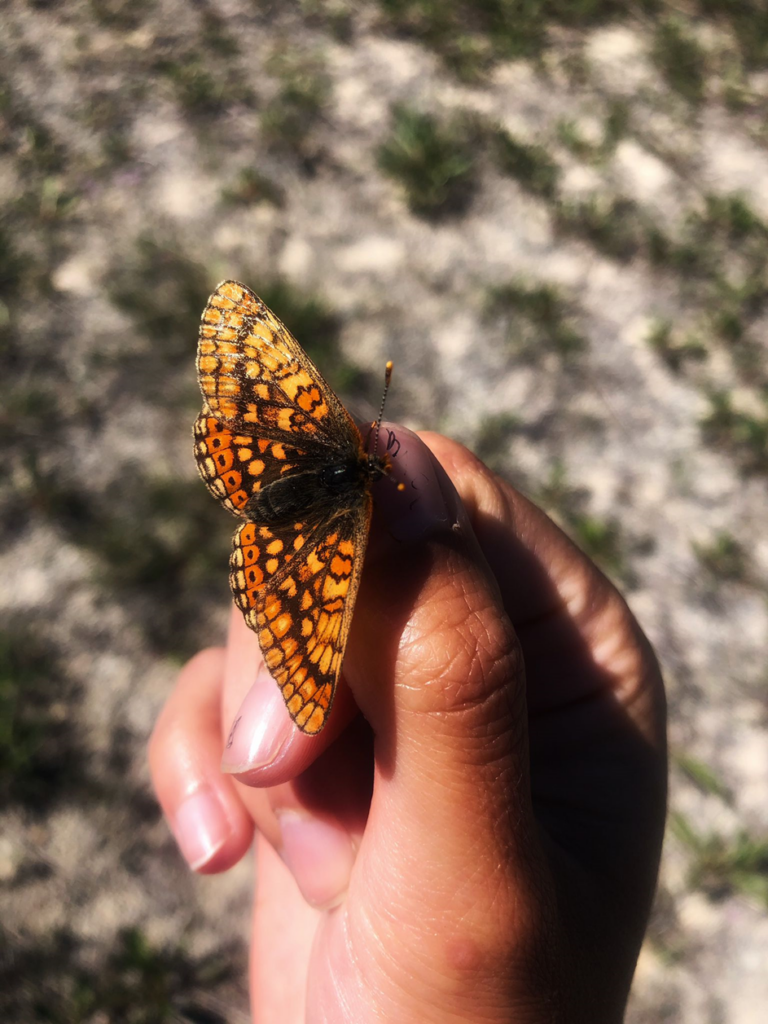I saw that patch area and connectivity is essential for the species, which is expected from the metapopulation theory. It was a surprise that no variable explained colonization, however, the habitat preferences can change from year to year, which might be a reason for that. The other variables explaining the dynamics show that habitat quality is also crucial for the species. Bush cover can help to protect the population from weather, and GMI might affect the host plant presence, which in turn provides a better area for the butterfly.

The population size shows that the species is recovering well from the drought, and this might be an indication that the patch network is well connected and large enough for the species. However, this should not be taken for granted, and providing the habitat preferences can guarantee better protection from future weather events.
The nectar use is targeted to some species. The most used species had purple flowers. The species with smaller flowers were not chosen. But, other studies found that the nectar used for marsh fritillary is opportunistic, which is the opposite of what we found. Since it was the first time nectar use was studied in the area, further research should be made to confirm the preferences.
The small-scale larvae variables are related to female oviposition preferences. The butterfly prefers to lay their eggs on larger host plants, so it can supply food for longer for the larvae after hatching. The presence of tussocks and the number of stalks can be beneficial since the larvae can climb in case of flooding. Lower vegetation cover and height can provide a warmer microclimate for the larvae, especially in Sweden where the sunlight needs to compensate for the cold weather.

Grazing was negative for the species, which has been seen in previous studies. However, grazing is a common measure to avoid the afforestation of grasslands, and support from the government is given to farmers to promote grazing. This support could instead focus on different grazing strategies, e.g. change in the grazing breed and rotational grazing, to keep the grasslands but not damage the species.
The species seems to be doing well after the drought and to keep the population viable and protect marsh fritillary, the butterfly preferences should be attended to. By keeping larger patches, providing better connectivity, keeping some bushes when managing, reducing grazing intensity, and providing the microscale larvae preferences. More studies should be conducted to confirm the non-opportunistic nectar use.